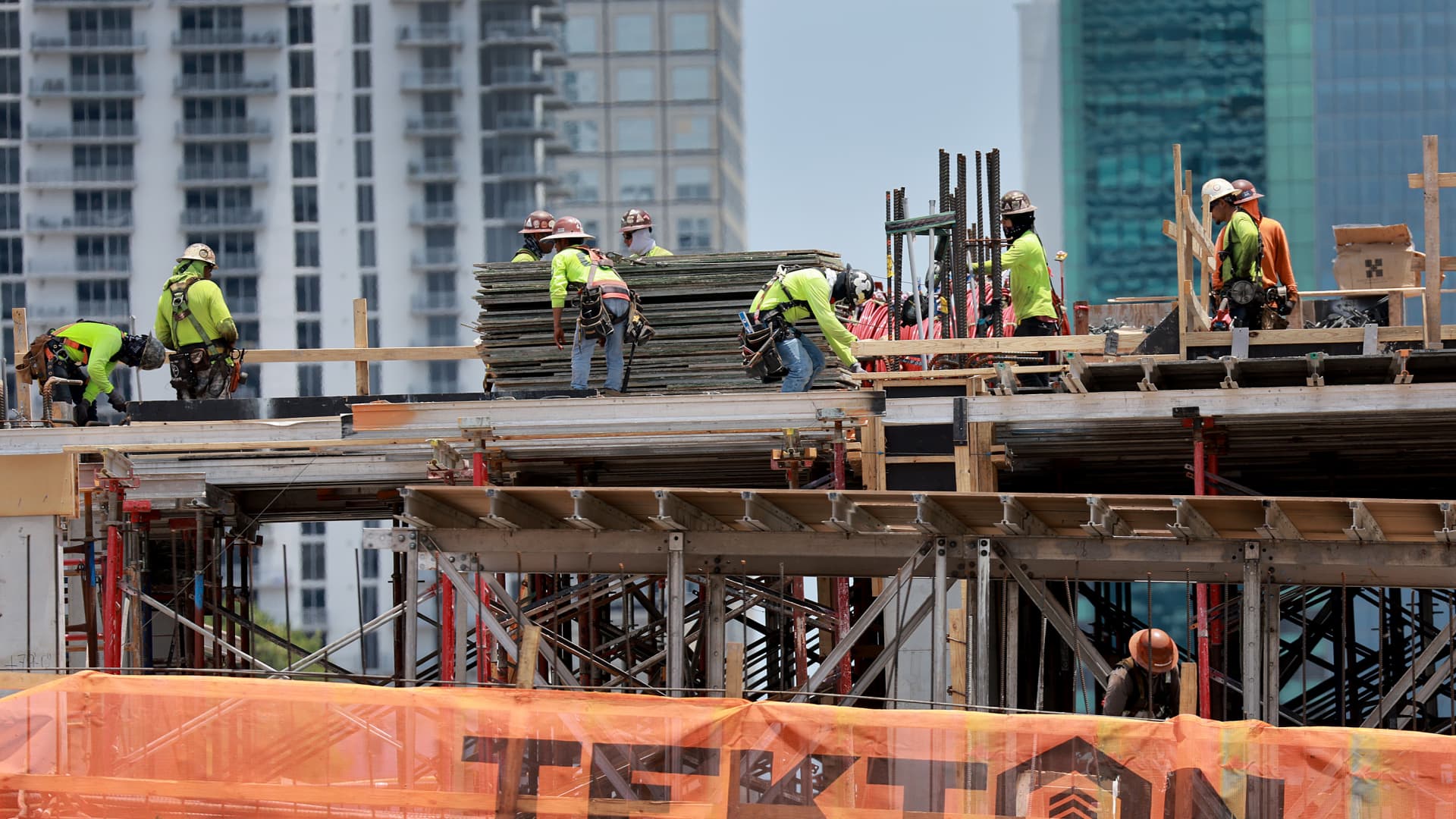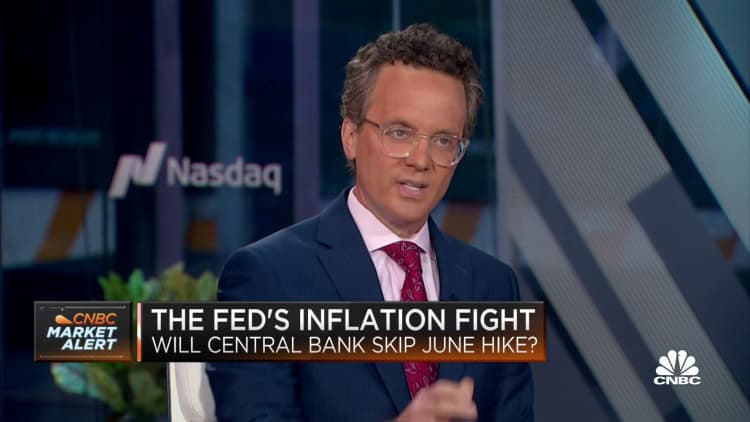
Construction workers on a job site on May 05, 2023 in Miami, Florida.
Joe Raedle | Getty Images
Watching the monthly jobs reports this year has been something of a waiting exercise, with economists and market participants looking for a downturn that never seems to arrive.
That scenario is likely to recur Friday when the Labor Department releases its nonfarm payrolls count for May. Economists surveyed by Dow Jones expect job growth of 190,000, a slowdown from the 253,000 jobs added in April, below the 2023 monthly average of 284,500 and the lowest monthly gain since December 2020.
But judging by the way these reports have been going, the risk is probably to the upside in a jobs market that has been nothing if not resilient. The jobs count has beaten consensus estimates 13 of 16 times since January 2022.
“The labor market still looks tight. Job openings are very high, unemployment is at a 50-plus-year low. We’re expecting further job gains… actually a bit above consensus,” said Joseph LaVorgna, chief economist at SMBC Nikko Securities America. “I would tell people to focus on whatever the trend is.”
For how much the headline numbers have been defying the market outlook, LaVorgna sees some underlying weakness.

Total job openings edged higher in April to 10.1 million, but the pivotal leisure and hospitality industry actually registered a nearly 6% decline, according to Labor Department data released Wednesday. That could be bad news for a sector that has generated more than 900,000 jobs over the past year.
Also, the April nonfarm payrolls report showed that job growth estimates for the prior two months were cut by 149,000, indicating that the picture from earlier this year hadn’t been quite as robust as initially indicated.
“Right now, we’re getting close to an inflection point,” said LaVorgna, who was chief economist for the National Economic Council under former President Donald Trump. “I don’t think it’s going to happen in May, but given the amount of tightening in the economy that the Fed has engineered and given that lending standards have gotten more restrictive, the labor market should weaken. History tells us when it happens, it happens fast.”
Defying the Fed
The tight labor market and the pressure that has put on wages and inflation has bedeviled the Federal Reserve. The central bank has raised interest rates 10 times since March 22, only to see inflation stay well above the Fed’s 2% target.
Policymakers, though, have signaled that they may be willing to skip hiking again when they meet later in June, as they look to see how all the policy tightening has impacted conditions.
“A decision to hold our policy rate constant at a coming meeting should not be interpreted to mean that we have reached the peak rate for this cycle,” Fed Governor Philip Jefferson said in a speech Wednesday. “Indeed, skipping a rate hike at a coming meeting would allow the [rate-setting Federal Open Market Committee] to see more data before making decisions about the extent of additional policy firming.”
One area policymakers will be focused on is average hourly earnings.
Wages are expected to increase 0.3% for the month and 4.4% from a year ago, a level that officials have said is not consistent with a return to 2% inflation. However, May could bring some good news in that regard.
A ‘fully staffed’ jobs market?
Data from Homebase indicates wages for small- and medium-sized businesses declined 0.2% in May, the first monthly decline since 2021. That came even with a 0.64% increase in employees working and a 1.16% gain in hours worked.
Payrolls processing firm ADP reported Wednesday that wages for workers who stayed at their jobs increased 6.5% in May, still high but a deceleration from previous months. ADP also said private payrolls expanded by a higher-than-expected 278,000 in May.
A Fed report Wednesday noted that wages grew “modestly” which was in line with the rest of the observations the “Beige Book” had about the jobs economy.
“Overall, the labor market continued to be strong, with contacts reporting difficulty finding workers across a wide range of skill levels and industries,” the report said, noting that some employers said “they were fully staffed, and some reported they were pausing hiring or reducing headcounts due to weaker actual or prospective demand or to greater uncertainty about the economic outlook.”
The unemployment rate in May was expected to nudge higher to 3.5%, which would still be near the lowest level since 1969.